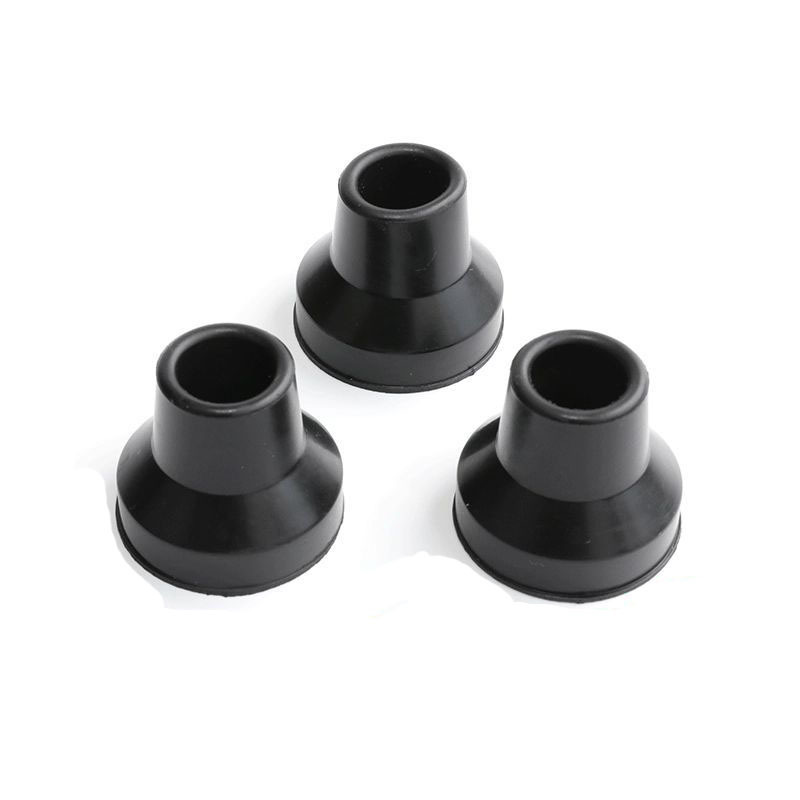24
2025
-
07
A Comprehensive Comparison: Silicone O Rings vs. Traditional Sealing Materials
A Comprehensive Comparison: Silicone O Rings vs. Traditional Sealing Materials
Table of Contents
- 1. Introduction
- 2. Understanding Sealing Materials
- 3. Performance Comparison: Silicone O Rings vs. Traditional Sealing Materials
- 4. Durability and Longevity
- 5. Cost-Effectiveness of Silicone O Rings
- 6. Applications of Silicone O Rings and Traditional Materials
- 7. Environmental Considerations
- 8. Conclusion
- 9. FAQs
1. Introduction
In the world of industrial sealing solutions, choosing the right material can significantly impact performance, longevity, and overall operational efficiency. **Silicone O rings** have gained popularity as an alternative to **traditional sealing materials**. This article provides a comprehensive comparison of silicone O rings and traditional sealing materials, exploring their unique characteristics, advantages, and applications.

2. Understanding Sealing Materials
Sealing materials play a crucial role in various industries, ensuring that components function harmoniously without leaks. This section delves into the two primary categories of sealing materials: traditional sealing materials and silicone O rings.
2.1 Traditional Sealing Materials
Traditional sealing materials include rubber, cork, felt, and various plastics. Each has its unique properties that make them suitable for specific applications. For instance, rubber gaskets are often used in high-pressure applications due to their resilience and flexibility. However, these materials may not perform well under extreme temperatures or chemical exposure.
2.2 Silicone O Rings
Silicone O rings, made from synthetic rubber, offer superior performance in many applications. Known for their high elasticity and flexibility, silicone O rings can withstand a range of temperatures and harsh environments. Unlike traditional materials, silicone O rings are resistant to UV light, ozone, and various chemicals, making them ideal for numerous industries, including automotive, aerospace, and food processing.
3. Performance Comparison: Silicone O Rings vs. Traditional Sealing Materials
When selecting sealing materials, performance is paramount. This section compares the essential performance metrics of silicone O rings and traditional sealing materials.
3.1 Compression Set
Compression set refers to the ability of a sealing material to return to its original thickness after being compressed. Silicone O rings typically exhibit a lower compression set than traditional rubber materials, meaning they maintain their sealing properties over time, reducing the likelihood of leaks.
3.2 Temperature Resistance
Silicone O rings have exceptional temperature resistance, functioning effectively in temperatures ranging from -60°C to 230°C (-76°F to 446°F). In contrast, traditional sealing materials may struggle in extreme conditions, leading to degradation and failure. The superior temperature range of silicone O rings makes them suitable for applications involving heat and cold extremes.
4. Durability and Longevity
Durability is a significant factor when comparing silicone O rings to traditional sealing materials. Silicone O rings generally have a longer lifespan, thanks to their robust molecular structure. They are less prone to cracking, hardening, or degrading over time, which is often a concern with rubber-based seals that can become brittle.
5. Cost-Effectiveness of Silicone O Rings
While silicone O rings may have a higher upfront cost compared to traditional sealing materials, their longevity and reduced maintenance needs can lead to significant cost savings in the long run. Industries that prioritize reliability and reduced downtime will find silicone O rings to be a more cost-effective solution over time.
6. Applications of Silicone O Rings and Traditional Materials
The choice of sealing material often depends on the specific application requirements. Silicone O rings are widely used in:
- **Automotive**: Fuel systems, engine components, and cooling systems, where temperature extremes are common.
- **Aerospace**: Sealing applications that require high performance under varying pressure and temperature conditions.
- **Food Processing**: Compliance with strict health regulations, as silicone materials are generally non-toxic and can withstand frequent cleaning.
Traditional sealing materials have also found their applications in:
- **Hydraulic Systems**: Gaskets in hydraulic pumps where high pressure is the norm.
- **91视频H污污 Appliances**: Seals in washing machines and refrigerators, where cost-effectiveness is essential.
7. Environmental Considerations
In today's industrial landscape, sustainability plays a critical role in material selection. Silicone O rings are often considered more environmentally friendly than traditional materials, as they do not contain harmful chemicals and have a lower environmental impact during production. Additionally, silicone is less likely to emit toxic substances when exposed to UV light or heat, making them a safer choice for various applications.
8. Conclusion
In conclusion, silicone O rings offer numerous advantages over traditional sealing materials, including superior performance, durability, and cost-effectiveness. Their ability to withstand extreme temperatures, resist chemicals, and maintain their sealing integrity over time makes them a reliable choice for various industries. As technology advances, industries will increasingly gravitate toward silicone O rings as a preferred sealing solution, ensuring enhanced operational efficiency and reliability.
9. FAQs
1. What is the primary advantage of silicone O rings over traditional sealing materials?
Silicone O rings provide superior temperature resistance and durability, leading to longer service life and reduced risk of leaks.
2. Can silicone O rings be used in food processing applications?
Yes, silicone O rings are non-toxic and compliant with health regulations, making them suitable for food processing applications.
3. Are silicone O rings more cost-effective than traditional seals in the long run?
While silicone O rings may have a higher initial cost, their longevity and reduced maintenance needs often result in long-term cost savings.
4. What temperature range can silicone O rings withstand?
Silicone O rings can function effectively in temperatures ranging from -60°C to 230°C (-76°F to 446°F).
5. Are silicone O rings environmentally friendly?
Yes, silicone O rings are considered more environmentally friendly than traditional materials, as they do not contain harmful chemicals and have a lower impact during production.
More News


